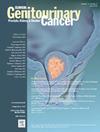Review of Relapse Detection Methods in Stage 1 Testicular Germ Cell Tumors in Patients After Orchidectomy Managed With Active Surveillance: Is Physical Examination Required?
IF 2.7
3区 医学
Q3 ONCOLOGY
引用次数: 0
Abstract
Background
Active surveillance (AS) is the preferred management for most patients with stage 1 testicular germ cell tumors (GCT) after orchidectomy as it avoids chemotherapy in up to 85% of patients. International guidelines recommend a combination of imaging, serum tumor markers and physical examination. The aim of this review was to analyze the diagnostic yield of physical examination for detecting relapse in these patients.
Methods
Systematic review of the literature from 1976 to 2024 detailing method of relapse detection for patients with stage I GCT managed with AS. Studies commencing after 1990 were assigned to the ‘Modern Cohort’ and those prior to this date were assigned to the “Older Cohort.” Descriptive statistical analysis of discrete data was performed to determine recurrence and proportion of patients, where relevant. The chi squared test was used to determine statistical significance.
Results
Twenty articles were identified representing 2232 (20%) relapses amongst 11,414 patients managed with AS. Relapses were detected by imaging alone in 60%, tumor markers alone in 24%, imaging and markers in 15%, and physical examination in 1.5%. Comparing the Modern cohort (n = 4771) to the older cohort (n = 6643), there were fewer relapses detected by physical examination (0.3% vs. 2%, P = .01) and more relapses detected by imaging alone (71% vs. 55%, P < .00001).
Conclusions
Almost all relapses are detected by routine imaging, serum tumor markers or a combination of these methods. Physical examination alone rarely identified relapses, particularly in the Modern cohort which we hypothesize was driven by improvement in imaging techniques. AS can be conducted safely without mandatory physical examination.
主动监测睾丸切除术后1期睾丸生殖细胞肿瘤复发检测方法综述:是否需要体格检查?
主动监测(AS)是大多数1期睾丸生殖细胞肿瘤(GCT)患者在睾丸切除术后的首选治疗方法,因为它可以避免高达85%的患者化疗。国际指南建议结合影像学检查、血清肿瘤标志物和体格检查。本综述的目的是分析体格检查对这些患者复发的诊断率。方法系统回顾1976年至2024年的文献,详细介绍了AS治疗的I期GCT复发检测方法。1990年以后开始的研究被分配到“现代队列”,而在此之前的研究被分配到“老年队列”。在相关的情况下,对离散数据进行描述性统计分析以确定复发率和患者比例。采用卡方检验确定统计学显著性。结果在11414例AS患者中,共发现20篇文章,代表2232例(20%)复发。单纯影像学检查复发的占60%,单纯肿瘤标志物检查复发的占24%,影像学和标志物检查复发的占15%,体检复发的占1.5%。现代组(n = 4771)与老年组(n = 6643)比较,体格检查发现的复发较少(0.3% vs. 2%, P = 0.01),单纯影像学检查发现的复发较多(71% vs. 55%, P <;.00001)。结论几乎所有的复发均可通过常规影像学检查、血清肿瘤标志物检查或综合检查发现。单独体检很少发现复发,特别是在现代队列中,我们假设这是由成像技术的改进所驱动的。AS可以安全地进行,无需强制体检。
本文章由计算机程序翻译,如有差异,请以英文原文为准。
求助全文
约1分钟内获得全文
求助全文
来源期刊

Clinical genitourinary cancer
医学-泌尿学与肾脏学
CiteScore
5.20
自引率
6.20%
发文量
201
审稿时长
54 days
期刊介绍:
Clinical Genitourinary Cancer is a peer-reviewed journal that publishes original articles describing various aspects of clinical and translational research in genitourinary cancers. Clinical Genitourinary Cancer is devoted to articles on detection, diagnosis, prevention, and treatment of genitourinary cancers. The main emphasis is on recent scientific developments in all areas related to genitourinary malignancies. Specific areas of interest include clinical research and mechanistic approaches; drug sensitivity and resistance; gene and antisense therapy; pathology, markers, and prognostic indicators; chemoprevention strategies; multimodality therapy; and integration of various approaches.
 求助内容:
求助内容: 应助结果提醒方式:
应助结果提醒方式:


